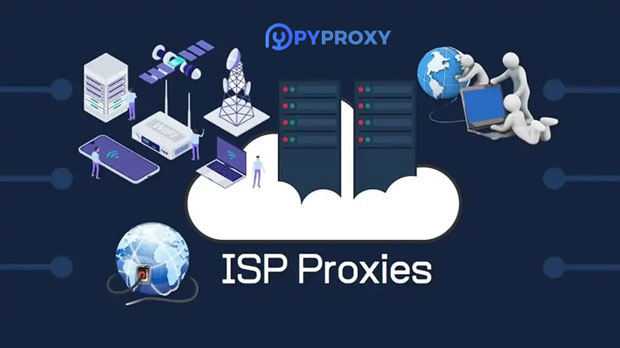LunaProxy vs PYProxy.com Rotating Residential Proxy, which one has a more flexible pricing structure?
In the world of rotating residential proxies, pricing structures are a key factor when choosing a service provider. Two prominent players in the market, LunaProxy and PYPROXY.com, offer rotating residential proxies, but they approach pricing differently. LunaProxy is known for its more traditional pricing model, while PYProxy.com employs a dynamic pricing approach, providing flexibility based on usage. This article will delve into the details of both providers' pricing structures, comparing their strengths and weaknesses. Ultimately, we will determine which one offers a more flexible pricing model for users with varying needs, such as businesses or individuals seeking to optimize their proxy usage for various tasks like web scraping, data collection, and online anonymity. Understanding Rotating Residential ProxiesBefore diving into the specifics of LunaProxy and PYProxy.com, it's important to first understand what rotating residential proxies are and why they matter. A rotating residential proxy is a service that automatically changes the IP address used for internet connections at regular intervals. These proxies use real residential IP addresses, offering a high level of anonymity and reliability compared to data center proxies. Businesses and individuals commonly use rotating residential proxies for tasks like scraping large amounts of data, bypassing geo-restrictions, and maintaining privacy online.One of the critical aspects of using rotating residential proxies is the cost, which can fluctuate based on the number of IP addresses used, the bandwidth consumed, and the frequency of IP rotation. This is where the pricing structure becomes crucial in determining how much value a user will get for their investment.LunaProxy Pricing Model: Traditional with Fixed TiersLunaProxy offers a more traditional pricing structure with fixed tiers based on usage. This means that users pay a set price for a particular package that offers a certain number of residential IPs, bandwidth, and rotation frequency. While this approach offers simplicity, it can also be restrictive for users who need more flexibility in adjusting their usage.For example, LunaProxy might offer different packages with set limits on data usage or a fixed number of IPs, making it suitable for businesses with predictable usage patterns. However, users with fluctuating demands might find the rigid structure limiting. If a business's usage needs increase temporarily, for instance, they may have to upgrade to a higher tier or pay for unused capacity. Furthermore, LunaProxy’s pricing may lack customization options for specific usage scenarios. Users who only need residential proxies for small, one-off projects may find the fixed packages overkill, while those with large-scale scraping needs may feel constrained by the pre-determined package limits.PYProxy.com Pricing Model: Dynamic and ScalableOn the other hand, PYProxy.com adopts a more flexible pricing model that is dynamic and scalable. Their pricing structure is designed to adapt to a user’s specific needs, offering customized plans based on factors like the number of IPs, the volume of bandwidth, and the frequency of IP rotation. This approach allows users to scale their usage up or down as required, without being locked into a set package.The key advantage of PYProxy.com’s pricing model lies in its adaptability. For example, if a user only needs proxies for a short period or requires less data, they can opt for a smaller, more affordable plan that suits their current needs. Conversely, users with larger demands can easily scale up to a more robust plan without facing steep price hikes or being forced into a high-tier package with excessive resources.Additionally, PYProxy.com’s dynamic pricing helps users optimize their spend. For businesses that experience fluctuating demands, such as during product launches or marketing campaigns, this model offers cost-effective flexibility that allows them to pay only for what they use.Comparing Flexibility in Terms of UsageWhen it comes to flexibility in pricing, PYProxy.com stands out for users with unpredictable or varying needs. The ability to scale resources up or down without having to worry about upgrading to a higher-tier package or paying for unused bandwidth is a major advantage. This flexibility makes PYProxy.com particularly appealing for businesses that require rotating residential proxies for tasks that may vary in scale.LunaProxy, by contrast, tends to cater more to businesses with stable or predictable proxy usage. Its fixed-tier pricing structure is ideal for companies that require a consistent amount of data or IPs each month. For businesses that have fluctuating needs or who want to experiment with different proxy configurations, the lack of pricing flexibility can be a disadvantage.Cost-Effectiveness: Which Model Saves You Money?The cost-effectiveness of each model ultimately depends on your usage patterns. For businesses with steady, predictable needs, LunaProxy may offer a more cost-effective solution since it provides clear pricing and set package limits. In such cases, businesses can easily budget for their monthly proxy costs without unexpected changes.However, for users or businesses that experience fluctuations in proxy needs, PYProxy.com offers significant cost savings. Since the pricing adjusts dynamically to the volume of usage, users are less likely to overpay for unused resources or underuse their allocated IPs. Additionally, businesses that only need proxies for certain periods, such as during specific campaigns or projects, can avoid long-term commitments and pay only for the bandwidth and IPs they actually use.Additional Considerations: Customer Support and Service AvailabilityBeyond pricing, another important factor to consider when choosing a proxy service is the level of customer support provided. Both LunaProxy and PYProxy.com offer customer support, but the availability and responsiveness can vary. Users with fluctuating needs may find that PYProxy.com’s dynamic approach is paired with more flexible support options that cater to a diverse set of use cases.LunaProxy, with its fixed pricing tiers, might have more standardized support options that work well for businesses with predictable needs. However, for users seeking more tailored assistance or immediate help with scaling their usage, PYProxy.com’s customer service could prove more accommodating.Conclusion: Which Provider Offers More Flexibility?In conclusion, when comparing the flexibility of pricing structures between LunaProxy and PYProxy.com, it’s clear that PYProxy.com offers a more adaptable and scalable model. Their dynamic pricing ensures that users only pay for what they use, making it ideal for businesses or individuals with varying proxy demands. LunaProxy, with its traditional fixed-tier pricing, works well for users with steady needs but lacks the flexibility required for businesses that need to scale their usage quickly.Ultimately, businesses and users who value flexibility, scalability, and cost-effectiveness should gravitate toward PYProxy.com, while those with predictable proxy requirements may find LunaProxy's fixed pricing more suitable. By understanding your specific usage patterns and needs, you can make an informed decision that maximizes the value of your rotating residential proxies.
2025-02-22
























































